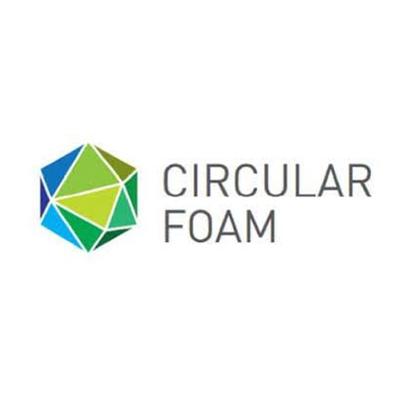CIRCULAR FOAM-Systemic expansion of territorial CIRCULAR Ecosystems for end-of-life FOAM
Updated on 06.11.2024
Polyurethane foams are used widely in large-scale applications – from carpet underlay to vehicle interiors. Rigid forms of the foams are effective insulation materials used in construction: roof and wall insulation, insulated windows, doors and air barrier sealants. Mountains of toxic polyurethane end up in landfill. The CIRCULAR FOAM project will reverse this trend. Specifically, it will develop a cross-sectoral systemic solution for the circularity of high-performance plastics from diverse applications. The waste streams will be upcycled chemically and valorised to become new virgin-equivalent feedstock for the chemical industry to produce new high-performance plastics.

Leading organisation/partner
Covestro Deutschland AG
Regions involved
North Rhine-Westphalia, Silesia, Greater Amsterdam region
Key deliverables
Regional blueprint for Hubs4Circularity, including societal research, industrial symbiosis (chemical recycling, waste management, including collection and sorting, reverse logistics, design for recycling, blockchain, system integration).
Key messages for project promoters
CIRCULAR FOAM in general:
- CIRCULAR FOAM provides a systemic solution for circular economy;
- CIRCULAR FOAM develops all technological and non-technological steps required to achieve circularity of rigid polyurethane insulations;
- CIRCULAR FOAM will provide a blueprint for a territorial systemic solution for the circularity of rigid polyurethane foam.
Territorial approach/regional transformation:
- to create a regional circular economy, CIRCULAR FOAM will develop strategies to bring together all stakeholders of the value chain;
- CIRCULAR FOAM supports regional cooperation that is a precondition for the implementation of circular economy solutions.
Chemical recycling:
- chemical recycling is essential to achieve full circularity;
- chemical recycling technologies are essential for the chemical industry’s transition towards carbon neutrality;
- chemical recycling contributes to becoming independent of fossil-based raw materials.
Waste management:
- closing the value chain requires new systems and technologies in the waste management sector;
- advanced collection and sorting systems will help to transform waste into a valuable resource;
- CIRCULAR FOAM develops a sustainable regional collection system and dismantling processes for appliances and construction waste containing polyurethane rigid foams as well as a fine-sorting method.
Circular Design:
- when designing new consumer appliances, one needs to keep in mind the end-of-life and enhance easy tracking, extracting and sorting of materials;
- digital tools will help achieve efficient material and product designs and thereby enable future recyclability.
Description of future collaboration with CCRI-CSO
- Share information and knowledge of the project with CCRI-CSO;
- Take an active part in CCRI support activities of Pilot and Fellow cities and regions;
- Participate in CCRI events;
- Development of a roadmap for H4C in polyurethanes.
- Collaboration within H4C European Community of Practice (CSA funded by EC DG R&I, within Cluster 4 call for Processes4Planet; Covestro is one of the leading partners both in the CSA and in the Processes4Planet Partnership).
CCRI-relevant material
- Project deliverables;
- Website;
- Peoject’s flyer and presentation.
Findings: regulatory bottlenecks
Diverse action plans of different actors on different levels (EU, national, regional) – need of harmonisation. Missing level of detail concerning the different kinds of plastics. For chemical recycling it is necessary to know what components are in the different materials and how to purify the streams so they can respond to the technology in question. Multiple technologies are necessary to deal with waste streams. Regulation of categorisation of waste streams – limitations of transport, especially across country borders.
Further information on regulation can be found in Deliverable 3.1. of CIRCULAR FOAM
Findings: regulatory drivers
- Ban of landfill (still working on the definition of drivers);
- limitations of transporting waste across country borders.
Financial schemes
Co-investment models, cascade funding (EU, national, regional and private to be combined).
Environmental outcomes of circular economy solutions
After practical implementation and replication in EU of the CIRCULAR FOAM systemic solution, the following reductions could be attained by 2040: 586 000 tonnes per year less waste; 18.6 million tonnes fewer CO2 emissions; EUR 118 million lower cost for incineration for the PU producers.
The project’s main goal is to chemically obtain feedstocks from waste PU rigid foams, which would be an alternative source of carbon replacing the fossil-based sources and thus helping to become more independent on imports. By transforming waste PU rigid foam into a valuable resource, CIRCULAR FOAM is also significantly contributing to the reduction of waste going into landfill or being incinerated.
The system will significantly contribute to resilience in regions, by helping with the transition from coal mining regions to innovation-oriented regions. It will create jobs and opportunities for SMEs to provide tailored services and develop new business models. We will develop a model for resource-related cooperation within the region, thus contributing to resource transformation and more independence from fossil-based resources.
Economic outcomes of circular economy solutions
Securing of markets for large companies – they need both their products to be recyclable and to have access to waste-based resources to replace fossil-based resources. Development of businesses for SMEs – new opportunities to participate in circular value chains and provide new services.
Participants
- INTERSEROH DIENSTLEISTUNGS GMBH, Germany
- ALBA ELECTRONICS RECYCLING GMBH, Germany
- PRZEDSIEBIORSTWO TECHNIKI SANITARNEJ ALBA SPOLKA Z OGRANICZONA ODPOWIEDZIALNOSCIA, Poland
- BT-WOLFGANG BINDER GMBH, Austria
- FLOORING INDUSTRIES LIMITED, Luxembourg
- UNILIN, Belgium
- ELECTROLUX ITALIA SPA, Italy
- CIRCULARISE BV, Netherlands
- BIOBTX BV, Netherlands
- RIJKSUNIVERSITEIT GRONINGEN, Netherlands
- RHEINISCH-WESTFAELISCHE TECHNISCHE HOCHSCHULE AACHEN, Germany
- TECHNISCHE UNIVERSITAT DORTMUND, Germany
- STICHTING HOGESCHOOL VAN AMSTERDAM, Netherlands
- STICHTING NEDERLANDSE WETENSCHAPPELIJK ONDERZOEK INSTITUTEN, Netherlands
- UNIWERSYTET EKONOMICZNY WE WROCLAWIU, Poland
- EIDGENOESSISCHE TECHNISCHE HOCHSCHULE ZUERICH, Switzerland
- FRAUNHOFER GESELLSCHAFT ZUR FOERDERUNG DER ANGEWANDTEN FORSCHUNG E.V., Germany
- RUHR-UNIVERSITAET BOCHUM, Germany
- FORSCHUNGSZENTRUM JULICH GMBH, Germany
- GORNOSLASKO-ZAGLEBIOWSKA METROPOLIA, Poland
- PARK NAUKOWO-TECHNOLOGICZNY EURO-CENTRUM SPOLKA Z OGRANICZONA ODPOWIEDZIALNOSCIA, Poland
- IZNAB SPOLKA Z OGRANICZONA ODPOWIEDZIALNOSCIA, Poland
- DECHEMA GESELLSCHAFT FUR CHEMISCHETECHNIK UND BIOTECHNOLOGIE, Germany



